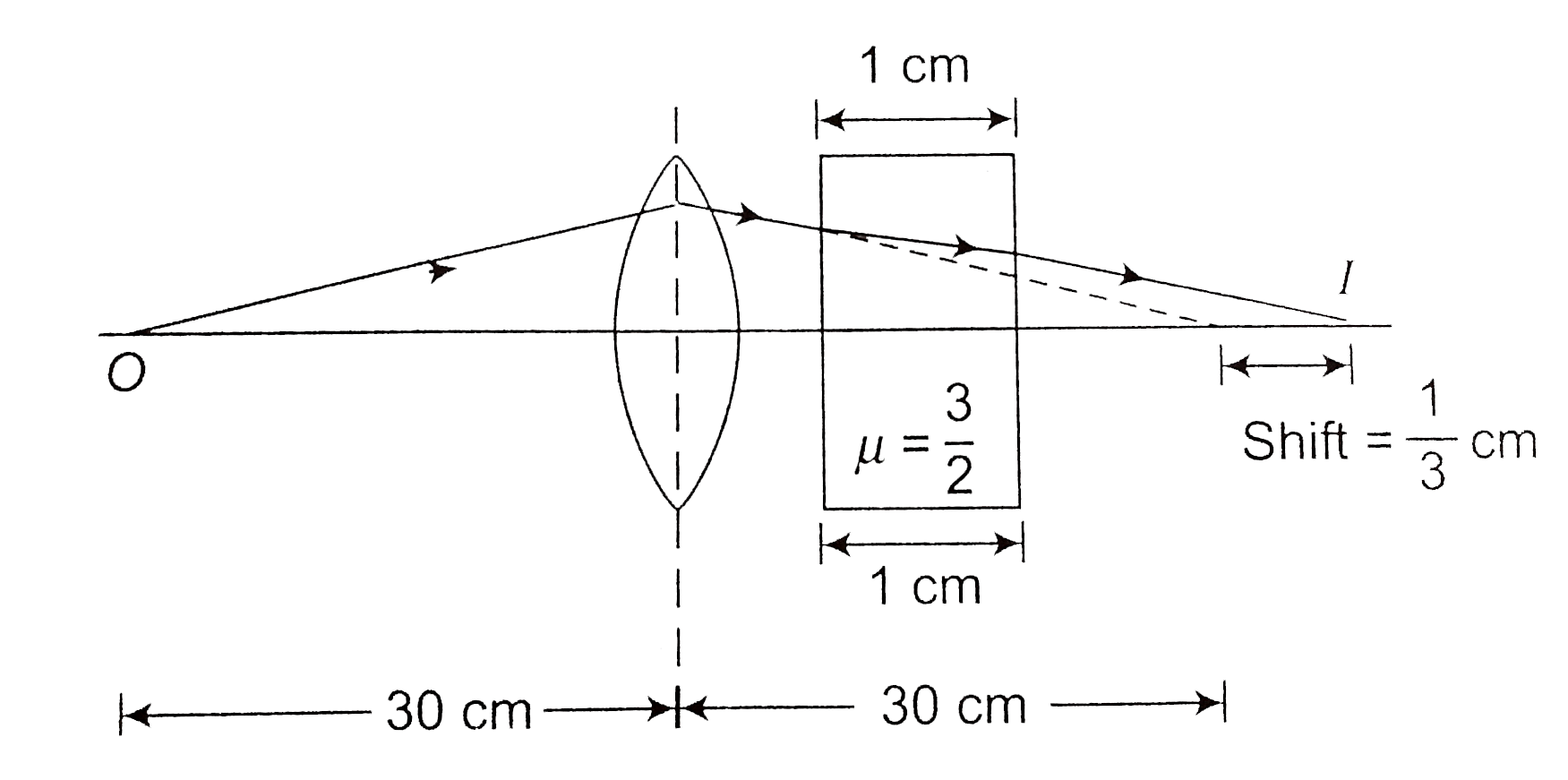A point object is placed on the principal axis of a convex lens (f = 15 cm) at a distance of 30 cm from it. A glass plate (μ=1.50) of thickness 1 cm is placed on the other side of the lens perpendicular to the axis. Locate the image of the point object.


Due to lens, image is formed at formed at distance 30 cm on the other side.
Due to glass slab, shift=t(1−1μ)=1(1−1(3/2))=13cm
Final image is formed at distance =30+13=30.33cm from lens
(b). 1f=1v−1u=110−1−40=540=18⇒f=8cm
Shift due to slab =3⎛⎝1−132⎞⎠=1cm
Image by lens should be formed at distance =10−1=9cm
1v−1u=1f⇒19−1−x=18⇒x=72cm
Topper's Solved these Questions
- REFRACTION AT SPHERICAL SURFACESBook:CP SINGHChapter:REFRACTION AT SPHERICAL SURFACESExercise:EXERCISES
Explore 105 Videos
- REFLECTION OF LIGHTBook:CP SINGHChapter:REFLECTION OF LIGHTExercise:EXERCISES
Explore 67 Videos
- REFRACTION OF LIGHT BY PLANE SURFACESBook:CP SINGHChapter:REFRACTION OF LIGHT BY PLANE SURFACESExercise:Exercises
Explore 110 Videos
Similar Questions
A point object is placed on the principle axis of a converging lens of focal length 5cm at a distance of 30cm form it. A glass plate (μ=1.50) of thickness 3cm is placed on the other side of the lens, comes out parallel to the principle axis?
View SolutionAn 5 cm tall object is placed on the principal axis of a convex lens of focal length 50 cm at a distance of 40 cm from it. Find the nature, position and size of image.
View Solution
Knowledge Check
A point object O is placed on the principal axis of a convex lens of focal length f=20cm at a distance of 40 cm to the left of it. The diameter of the lens is 10. An eye is placed 60 cm to right of the lens and a distance h below the principal axis. The maximum value of h to see the image is
A0B2.5 cmC5 cmD10 cmPoint object O is placed on the principal axis of a convex lens of focal length 20cm at a distance of 40 cm to the left of it. The diameter of the lens is 10cm to the right of the lens at a distance h below the principal axis, then the maximum value of h to see the image will be
A0B5cmC2.5cmD10cm
A 5 cm tall object is placed on the principal axis of convex lens of focal length 50 cm at a distance of 40 cm from it. Find the nature, position and size of the image.
View SolutionAn object 10 cm tall is placed on the principal axis of a concave lens of focal length 10 cm at a distance of 15 cm from it. Find the position and nature of the image formed by the lens and draw the ray diagram.
View SolutionA convex lens of focal length 20 cm is placed at a distance 5 cm from a glass plate (μ=32) of thickness 3 cm. an object is placed at a distance 30 cm from lens on the other side of glass plate. Locate the final image produced by this optical setup.
View SolutionAn object 50cm tall is placed on the principal axis of a convex lens. Its 20cm tall image is formed on the screen placed at a distance of 10cm from the lens. Calculate the focal length of the lens.
View SolutionAn object 50 cm tall is placed on the principle axis of a convex lens. Its 20 cm tall image is formed on the screen placed at a distance of 10 cm from the lens. Calculate the focal length of the lens.
View SolutionA point object is placed at a distance of 12 cm on the principal axis of a convex lens of focal length 10cm. A convex mirror is placed coaxially on the other side of the lens at a distance of 10cm. If the final image coincides with the object, sketch the ray diagram and find the focal length of the convex mirror.
View Solution